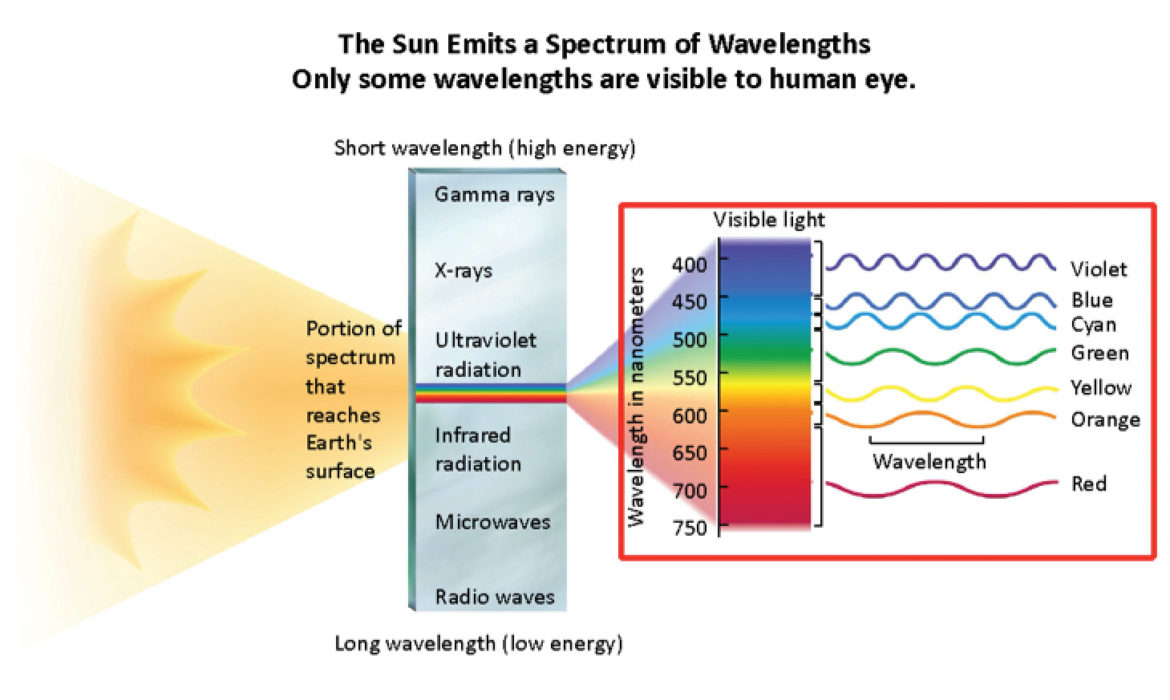By Mohammad Ahrar, PhD
The Basics
Plants contain different pigments, such as chlorophyll, which come in different chemical structures. They are referred to as photopigments because they absorb specific solar rays. These photopigments are concentrated in microscopic bubble-like chambers called chloroplasts. In the chloroplasts, enzymes run the photosynthetic reactions, during which plants absorb carbon dioxide from the atmosphere and produce oxygen that is released into the atmosphere. The photopigments in chloroplasts not only play an important role in the lives of animals but also give color to the planet Earth.
Why We See Plants in Green Color
Different forms of chlorophyll absorb different solar radiations. Only wavelengths between 400 to 700 nanometers are visible to the human eye and we see them as dark blue to very red. Chlorophyll in green plants absorbs blue-violet and red light but reflects green light (about 550-nanometer wavelength). Chlorophyll b absorbs blue and orange and reflects yellow-green light. During a plant’s growing season, the concentration of chlorophyll in the leaves is highest. Because green light is reflected from the leaves, the human eye perceives leaves to be green.
Why Plants Look Colorful in the Fall
Besides chlorophyll, plants have different forms of photopigments, including carotenoids, which also come in different chemical structures. Most carotenoids absorb blue-green light and reflect yellow-orange-red (about 575-700 nanometer wavelengths). As the weather gets cooler and the angle of the sun changes in the Fall, the concentration of chlorophylls diminishes. Therefore, the proportion of carotenoids to chlorophyll increases. Because carotenoids absorb most light waves (between 400-550) and reflect yellow-orange-red, the human eye perceives the Fall leaves to be so colorful.
And now you know!



















